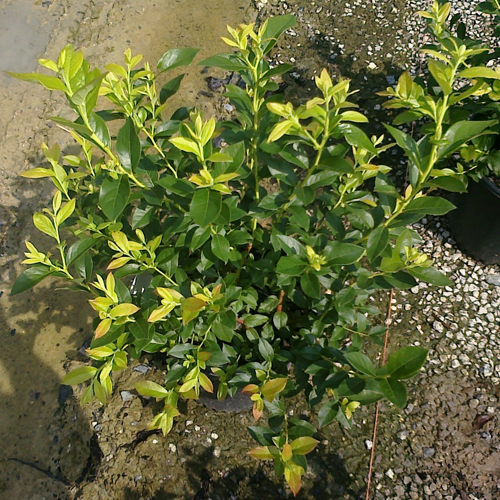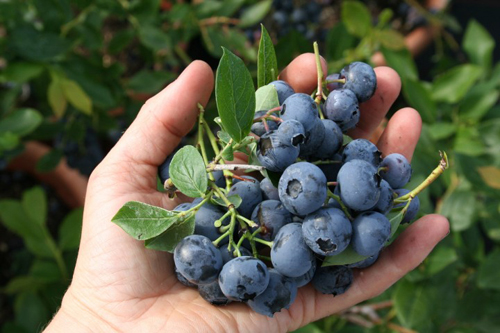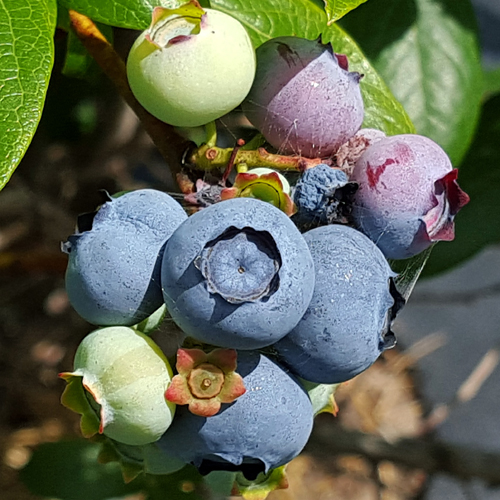Duke blueberry variety
A variety with a loud and immediately impressive name Duke, which in English means "Duke". At the beginning of the article, I would like to briefly talk about who he was so named after. Around 1908, a new agricultural industry emerged in the United States, with the creation of new varieties of blueberries based on those found in the wild. The first was Rubel, and the breeding of hybrids began in 1916. New items were offered to customers in 1920, and active commercial sales were launched in 1924. One of the pioneers of the cultivation and breeding of tall blueberries in America was Arthur Galette, nicknamed "The Duke". One of the five Galette brothers, the sons of immigrants from Sicily. They subsequently founded the Atlantic Blueberry Company, which is now the largest tall blueberry farm in the world with 1,320 acres. And the first sale of the company brought in only $ 3. An interesting fact - in 1946, to clear and prepare new lands for growing blueberries, the brothers used a decommissioned army tank as a tractor.

History of creation
Duke was bred in 1972 by a group of American breeders consisting of G. Galletta, N. Vorsa, G. Jelenkovic led by A.D. Draper (from USDA-ARS). The breeding was carried out in Beltsville, Maryland, as part of the USDA's High Growing Blueberry Program. As a result of cross-pollination of numbered varieties G-100 (Ivanhoe X Earliblue) X 192−8 (E-30 X E-11), seedlings of a new variety were obtained, which subsequently showed excellent quality, berry size, yield and quite early ripening. After many years of observation, the new seedlings entered the open sale in 1987.
Description
Duke blueberry is a time-tested, consistently high-yielding and very early variety. Begins to bear fruit in mid-June in the south of the country, in other regions from late June-early July. The yield is high and stable. In American industrial plantings, our hero occupies up to 10% of the total in the country. Suitable for mechanized harvesting of fruits. Berries are well suited for the fresh market, freezing and processing, used in cooking and medicine.
The plant is vigorous, with good vigor, but produces an average number of shoots. They are upright, strong and resilient, moderately branched, 1.2 to 2 meters high and 1-1.7 meters wide, depending on age. The stems are green in the first year of life, then they turn stiff and acquire a brown tint. The habit of the bush is open and the fruits are collected in open clusters, which favors manual and mechanized harvesting. The root system is fibrous, moderately branched, not powerful and without sucking hairs. The plant is nourished due to the symbiosis of the heather root system with the mycelium of the fungus, called mycorrhiza. Therefore, for the successful cultivation of Duke, an acidic soil is required, preferably with an acidity level of pH 4.5-4.8.

The variety blooms late, in the second half of May. The late term protects blueberry flowers from "insidious" recurrent frosts, which cause great harm to many crops, for example, early varieties of strawberries. The plant looks very decorative at the time of flowering. The flowers are beautiful, white-pink, bell-shaped with backward-curved denticles, about 1 cm long, collected in numerous clusters. Duke is a self-pollinated variety of tall blueberries, but cross-pollination with other varieties improves the quality of the berries and the amount of ovary on the bush. The leaves are dark green, smooth with a glossy sheen, by autumn they become decorative bright red and orange-red. They are dense, oval in shape with solid edges. Their length is 7-8 cm, width is 3-4 cm. Due to the effectively changing color of foliage, the plant can be used for decorative purposes, in particular for landscape design.
Fruits are medium-large and large, 1.7-2 cm in diameter, weighing mainly 1.6-2.1 grams, can gain up to 2.5 grams. Duke is known for its high yield of uniform, high quality fruit. The berries are collected in dense clusters of 8-15 pieces. Moreover, the fruits ripen quite amicably, the bulk of the crop is harvested in 3-4 samples. The scar after harvesting is dry and small. The berries are round, slightly flattened, light blue in color with a slight bluish bloom, with a small perianth. They are firm and firm, crunchy when eaten. The skin is firm and elastic. The pulp is juicy, with a rich aftertaste, rich aromatic, greenish color. There are many seeds, but they are very small, practically imperceptible. The berries are quite sweet, with a spicy sourness, the taste is mild, sometimes slightly tart. The mild flavor is further enhanced by cooling the fruit. Blueberry fruits are transportable, stable, do not crack during transportation and storage.
Interesting facts about the characteristics of Duke can be gleaned from the results of comparative studies by American scientists conducted in Hammonton, New Jersey. They were held from 1996 to 2001. Pre-young seedlings of the tested varieties were planted in the experimental field in 1993.

According to data for a six-year period, the weight of the fruit ranged from 1.2 to 2.1 grams, with an average of 1.77 grams. The density of berries is from 134 to 160 (gmm-1), the content of soluble substances is from 144 to 160, the titratable acidity (% citric acid) is from 0.39 to 0.54. Ripening dates for half of the crop: the smallest - June 21, the largest - July 2. According to the timing of the beginning of ripening of berries and the end of fruiting, the earliest period was from June 16 to July 6. The latest is from June 22 to July 13. As a result, according to the results of 6 years of research, the shortest return period for Duke's harvest was 18 days, the longest - 25.
In terms of the size of the harvest from the blueberry bush, the least amount was obtained in 1996 - 2.1 kg, the most in 1999 - 7.4 kg. On average, the yield per bush based on the results of 6 years was 4.55 kg. Moreover, the smallest values for the yield of the plant were shown in the 3rd year after planting - 2.1 kg, and in the 4th year - 2.8 kg. In the 5th year, the indicators increased sharply and were already 6.3 kg (low productivity results in the first two years from the beginning of fruiting and reduced the average overall indicator for 6 years). Therefore, we can safely say that Duke gains maximum strength after reaching the age of five. The yield can then go up to 8 kg per bush.
Plants require regular but moderate pruning during the growing season to maintain large size and good quality fruit. The variety itself is quite hardy, adapts well to various growing conditions both in the southern and northern regions. But frost resistance ranges from -25 ° C to -35 ° C, depending on various weather components in winter. For example, frequent thaws followed by a sharp drop in temperature, high humidity can cause significant freezing of the shoots. It is very important not to overfeed Duke with nitrogen fertilizers so that the shoots have time to ripen.

The plant thrives best on light, well-drained soils. He also prefers warm, well-lit areas. The culture reproduces well, in particular by green cuttings. The variety is resistant to the main diseases of tall blueberries, in particular to the mummification of berries.
To maintain good growth and development of the bush, regular fertilizing with fertilizers with different contents of micro- and macroelements is required. Moreover, it is necessary to select NPK fertilizers according to the period of plant development. And of course, do not forget to maintain the required soil acidity.
Strengths of the variety
- Large berries and good stable yield, high percentage of one-dimensional fruits.
- Late flowering time, protecting flowers from spring frosts.
- Amicable and very early ripening of fruits, the ability to carry out mass samples. Due to this, Duke is of particular interest for the fresh berry market, allowing to sell more crops at a high price.
- Strong vigor, moderate branching of lateral shoots.
- Good transportability and keeping quality of berries.
- The versatility of the use of fruits.
- Sweet, juicy berries with aromatic pulp and rich aftertaste.
- Variety endurance and adaptation to different growing conditions both in the north and in the south.
- Resistant to major blueberry diseases.
- The possibility of using the plant for decorative purposes.
Duke's Weaknesses
- Increased exactingness to the composition and structure of the soil, intolerance to waterlogging.
- The need for regular pruning.
- In plantings, seedlings fall out and the plant itself freezes out much more often than in other varieties.
- Bushes can "fall apart" - shoots tend to the ground under the weight of numerous large berries.
- Lack of stable frost resistance, direct dependence of the plant on weather factors in winter. Therefore, it is advisable to shelter with agrofibre (lutrasil) for the winter.
As a result, we can conclude that for summer cottages and garden plots, where it is easier to pay more attention to blueberries, Duke will be an excellent and right choice. It is also advisable to grow it on an industrial scale, but the described disadvantages of the variety do not allow it to take a leading position, as, for example, the hero of one of our other articles - the famous Bluecrop.
Author: Maxim Zarechny.








